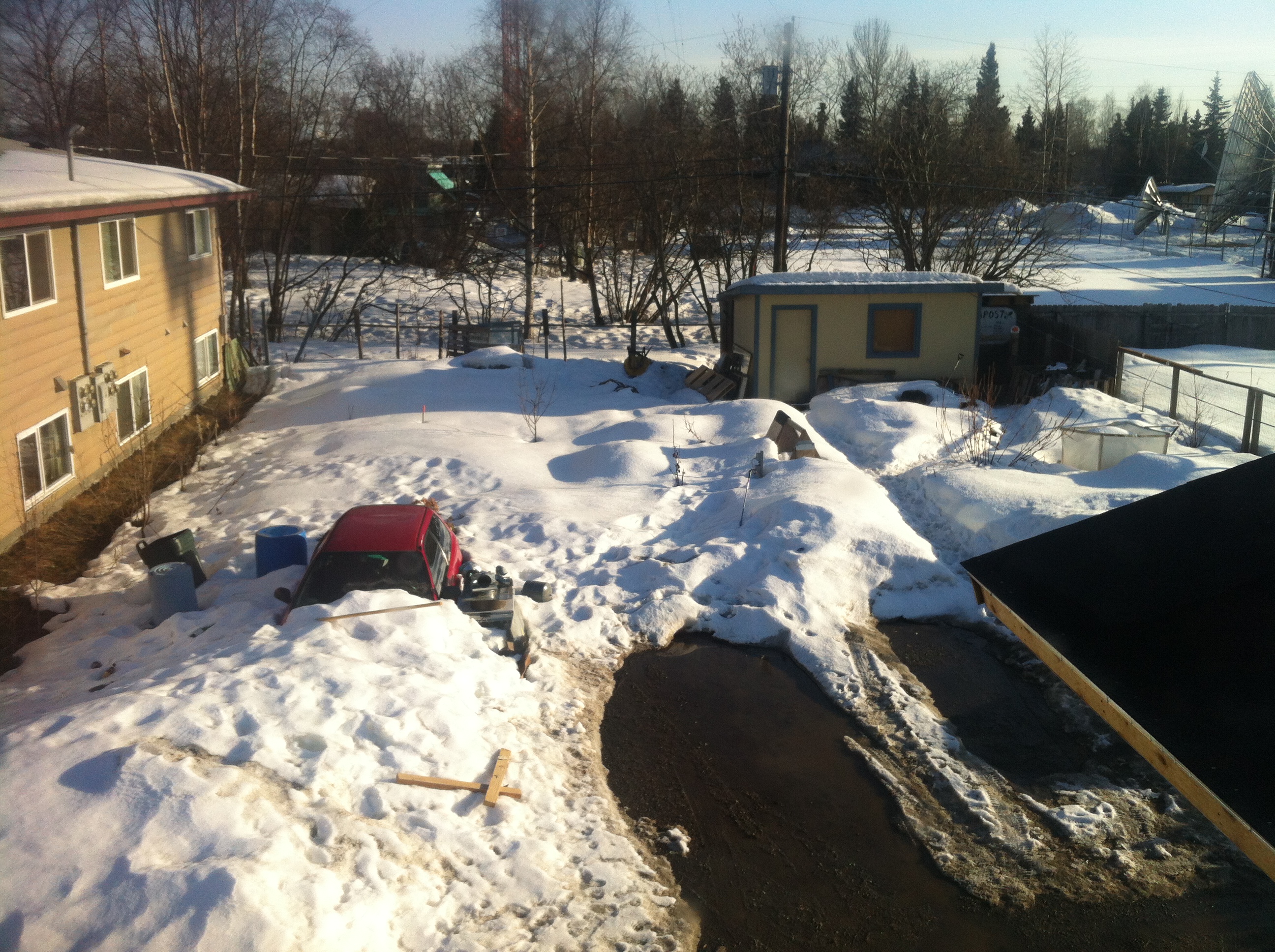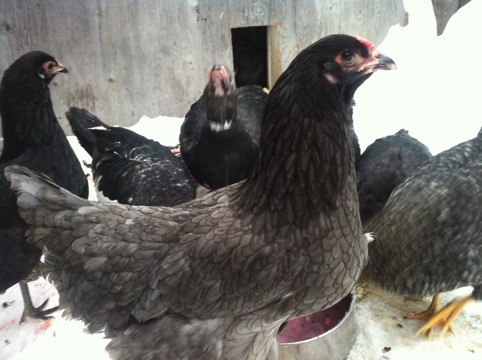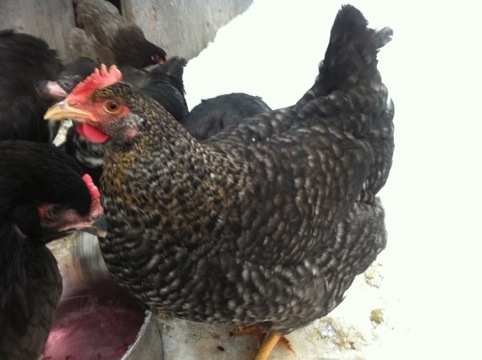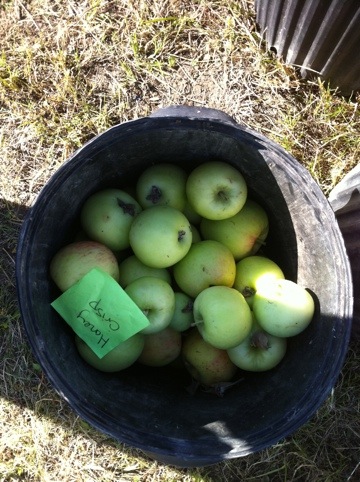Over two weeks ago now I perpetrated a premeditated offing. The crime scene still shows some blood spatter if you dig around in the snow. I’d spent about 6 months intending to take out my victim, researching killing and disemboweling methods. Even when I grew somewhat attached to my intended target, I counseled myself to remain distant…biding my time.
And then that fateful Tuesday earlier this month. He started making too much noise. It was time to act before the neighbors grew suspicious. I set out my knives and went to work as normal, knowing my victim awaited his fate locked in the shed.
Ok, enough Dexter creepiness…Featherfoot the rooster crowed one morning as I brought the chickens and ducks water, and sealed his fate for the day. I got home from work, set my canning pot on the stove to heat water for plucking, loaded my favorite ‘how to butcher a chicken the simple way’ website and went out to the coop. Featherfoot was gentle to the end, almost no protest as I picked him up, held and petted and cooed to him, hung him up by his feet over a bucket outside, and slit his throat with a sharp fillet knife.
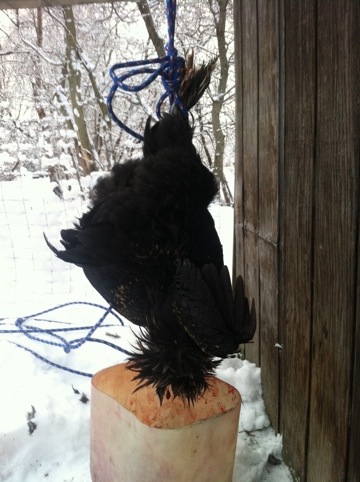
Then he struggled, with what seemed to be minutes of post-mortem wing flapping that caused him to fall from his rope where I held him over the bucket, double checking the mortal severity of my slice, until he quieted.
A bit breathless from this, I then methodically dipped and plucked him and the three young chickens that the dog had offed and left one summer day. Fresh from the freezer, these tender young chickens’ skins pulled off as I worked to pluck and I let that be.

The website butchering instructions were flawless, and all went well, even with my modification of saving the tail (which I love), by cutting under it instead of over. For the young chickens, since they hadn’t been gutted before freezing, I cut off frozen necks, legs, wings and breasts, chucking the rest in the compost for food safety.

He went straight in the oven for that night’s dinner. I followed the high-roast recipe on the butchering site, but in hindsight I should have cooked him slower or frozen him first to tenderize the meat. He was very tasty, but a bit tough and stringy the first night, much more tender in soup the next day.

I’m not sure I fully feel him as gone, and I’m sure the butchering was easier since my contact with the chickens is fairly limited in the winter ( the cold keeps us all inside more). I know it will be sad to not see him out being so wonderfully roosterish with his girls in the spring. But I am very proud that I seem to be cut out for this practical farmer lifestyle. The not-unpleasant but not-appetizing sweet smell of the guts was the only slightly distasteful thing (other than meting out death) of the whole process for me. The liver was amazingly tasty though. I remarked that I would raise meat birds just for the amazing taste of their fresh livers! (yumm…with fava beans would be good!)
Rest in peace, wonderful Featherfoot…if I can say that to someone I killed and ate.








